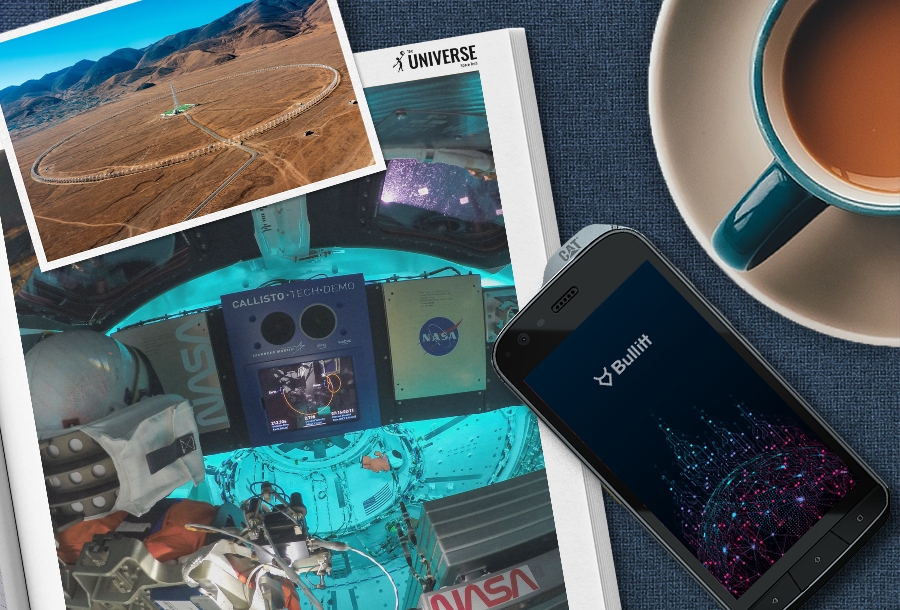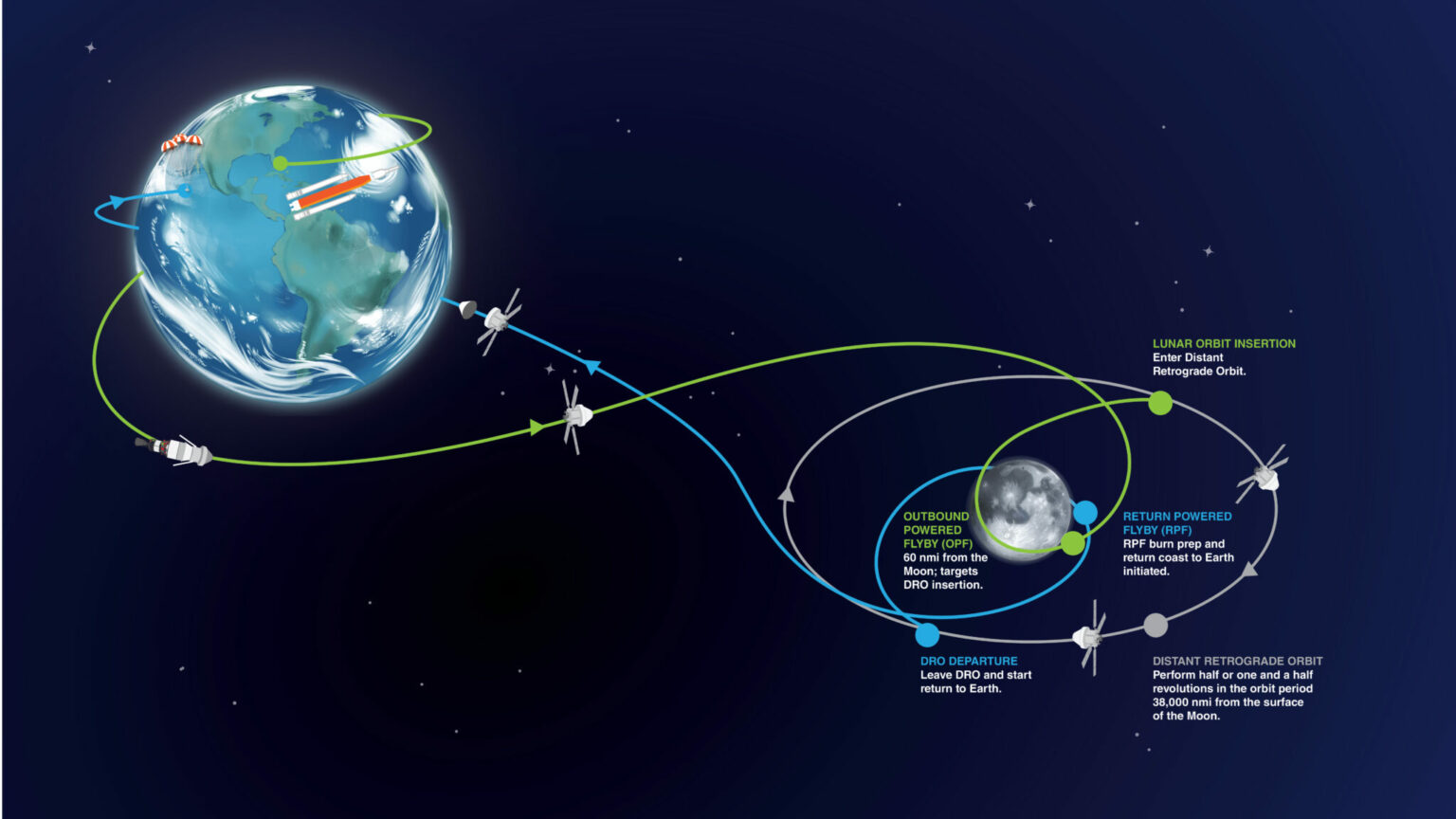
Selection of the most interesting space news for the week: China has built the largest solar radio telescope; the British will release a smartphone for direct communication via satellite; and we tell you why knowledge is the only resource that matters.
“Millions saw the apple fall, Newton was the only one who asked why?”
― Bernard M. Baruch
British company to release a smartphone capable of communicating directly with satellites
The British company Bullitt promises to release a smartphone in early 2023 that will be able to connect directly to satellites in orbit without an external antenna. With its help, it will be possible to exchange text messages regardless of whether the ground transmitters are working. In addition, they would have access to an emergency call for help. For the past 18 months, Bullitt and MediaTek have been working on creating a chip that will provide such a connection and have finally completed it.
China completes the construction of the largest solar radio telescope
The Chinese authorities have completed the construction of the DSRT radio telescope (Daocheng Solar Radio Telescope). Today it is the largest specialized telescope designed to study the Sun. It consists of 313 six-meter antennas. They are placed in the form of a circle with a diameter of 3.14 km. It is located on a mountain plateau in Sichuan Province in southwest China. Its main task is to study coronal mass ejections, flares, charged particles, etc. The telescope will also be used to assess the impact of solar activity on the Earth. DSRT data will help increase the accuracy of space weather forecasts.
When the Sun goes down and the Earth dies – ESA gives the answer
The ESA Star Mapping GAIA project looks into the future of the Sun. Человечество живет в период, когда Солнце находится в своем «среднем возрасте» — 4,57 млрд лет. Однако по мере старения эта стабильность изменится. Сейчас поступают новейшие данные миссии GAIA (DR3). According to the conclusions, our Sun will reach its maximum temperature in about 8 billion years, and then quickly begin to cool and increase in size, becoming a red giant star in about 10-11 billion years. Then the Sun will go down and go into a weak white dwarf state.
The brightness and temperature of the Sun increase by 10% in about a billion years. Although 10% may seem insignificant, they will heat the Earth enough to make it uninhabitable in 2-3 billion years. After that, the Earth will physically exist, but its surface will be hot and dead.
The US will test satellites to track the launches of hypersonic missiles
The Space Operations Command of the United States of America announced that two projects of satellites that will be able to track the launches of hypersonic missiles and drones passed their verification. One of them was developed by Millennium Space Systems, the other by Raytheon Intelligence & Space. According to military representatives, the developers have demonstrated the viability of sensor designs, and now it is possible to move from designing to building demonstration devices. In 2026, they will be put into medium Earth orbit in order to demonstrate the possibility of tracking the launches of hypersonic missiles.
SpaceX raises prices for Starlink users in Ukraine
The price of the Starlink satellite terminal in Ukraine has almost doubled, according to a Financial Times report. This happened due to an increase in demand for satellite Internet from SpaceX and targeted attacks by Russia on the country’s power grid, which caused the failure of communication networks.
The cost of Starlink terminals in Ukraine is planned to increase from USD 385 to USD 700. The monthly subscription required to use the service will also increase from USD 60 to USd 75 starting on December 29, according to emails sent to Ukrainian Starlink customers. Although it is still cheaper than the initial rate of USD 100, which was reduced back in August in order to adapt to the conditions of the local market. For comparison: in the US, the Starlink antenna costs USD 599 along with a monthly subscription of USD 110.
Photo of the week
Any time you fly to the Moon, it’s a celebration. Over the weekend, we put on a show for @NASA_Orion‘s purposeful passengers using our #Callisto tech demo! ????????@alexa99, party mode!
Bonus: Sound on to hear the ambience of Orion’s interior as it travels in deep space. ???? pic.twitter.com/ZdEkZHuli8
— Lockheed Martin Space (@LMSpace) November 28, 2022
The party mode feature is part of a demonstration of Orion’s Callisto technology, which includes Amazon’s built-in Alexa voice assistant. This technology helps future astronauts to use voice commands to facilitate and accelerate work on the spacecraft. “Party Mode” is just one quick request if they need to celebrate an important event, like arriving on the Moon.
Interesting figure — 432 194 km

NASA’s Orion spacecraft covered more distance from Earth as part of the Artemis I mission than any other vehicle designed for astronauts. Orion performs the entire flight in automatic mode without a crew. The spacecraft overcame a record distance and on November 28 was 432,194 kilometers from Earth. The record previously belonged to Apollo 13 at 400,171 km from Earth.
Something to read on the weekend

In the modern world, only knowledge is the only resource that matters. The knowledge economy is an economy in which knowledge plays a crucial role. Their production becomes a driving force for the development of the country and society, a market product that can be sold and make a profit. Such a scheme works only in those states where there is a cult of knowledge, and citizens are ready to constantly learn and develop. Read more in the article: «What is the knowledge economy».
Read also: Falcon 9 rocket fails to return to Earth, ESA is to receive record budget: news digest
Follow us on Twitter to get the most interesting space news in time
https://twitter.com/ust_magazine

